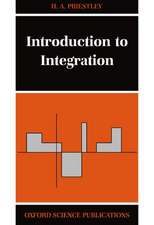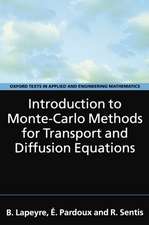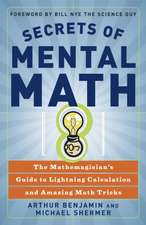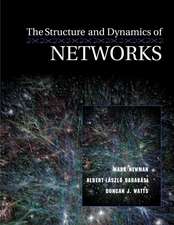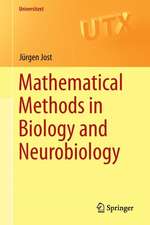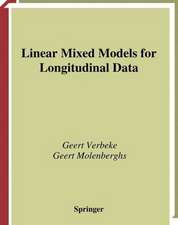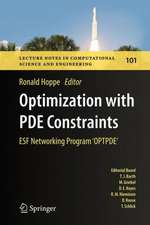Mathematical Aspects of Reacting and Diffusing Systems: Lecture Notes in Biomathematics, cartea 28
Autor P. C. Fifeen Limba Engleză Paperback – 5 mar 1979
Din seria Lecture Notes in Biomathematics
-
 Preț: 211.24 lei
Preț: 211.24 lei -
 Preț: 364.33 lei
Preț: 364.33 lei -
 Preț: 366.17 lei
Preț: 366.17 lei -
 Preț: 375.96 lei
Preț: 375.96 lei -
 Preț: 381.35 lei
Preț: 381.35 lei -
 Preț: 372.82 lei
Preț: 372.82 lei -
 Preț: 370.62 lei
Preț: 370.62 lei - 5%
 Preț: 352.79 lei
Preț: 352.79 lei -
 Preț: 370.25 lei
Preț: 370.25 lei -
 Preț: 373.56 lei
Preț: 373.56 lei -
 Preț: 379.47 lei
Preț: 379.47 lei - 5%
 Preț: 375.27 lei
Preț: 375.27 lei - 5%
 Preț: 356.81 lei
Preț: 356.81 lei -
 Preț: 370.41 lei
Preț: 370.41 lei -
 Preț: 373.39 lei
Preț: 373.39 lei -
 Preț: 389.11 lei
Preț: 389.11 lei -
 Preț: 376.90 lei
Preț: 376.90 lei -
 Preț: 370.04 lei
Preț: 370.04 lei -
 Preț: 370.04 lei
Preț: 370.04 lei -
 Preț: 369.31 lei
Preț: 369.31 lei -
 Preț: 365.43 lei
Preț: 365.43 lei -
 Preț: 390.40 lei
Preț: 390.40 lei -
 Preț: 365.22 lei
Preț: 365.22 lei -
 Preț: 385.59 lei
Preț: 385.59 lei -
 Preț: 370.78 lei
Preț: 370.78 lei -
 Preț: 375.60 lei
Preț: 375.60 lei -
 Preț: 380.61 lei
Preț: 380.61 lei -
 Preț: 364.49 lei
Preț: 364.49 lei -
 Preț: 368.57 lei
Preț: 368.57 lei - 15%
 Preț: 556.19 lei
Preț: 556.19 lei -
 Preț: 366.53 lei
Preț: 366.53 lei -
 Preț: 390.40 lei
Preț: 390.40 lei -
 Preț: 384.12 lei
Preț: 384.12 lei -
 Preț: 395.22 lei
Preț: 395.22 lei -
 Preț: 371.14 lei
Preț: 371.14 lei - 5%
 Preț: 357.17 lei
Preț: 357.17 lei -
 Preț: 364.49 lei
Preț: 364.49 lei -
 Preț: 372.46 lei
Preț: 372.46 lei -
 Preț: 386.54 lei
Preț: 386.54 lei -
 Preț: 337.17 lei
Preț: 337.17 lei -
 Preț: 368.94 lei
Preț: 368.94 lei -
 Preț: 393.18 lei
Preț: 393.18 lei -
 Preț: 383.55 lei
Preț: 383.55 lei -
 Preț: 384.66 lei
Preț: 384.66 lei -
 Preț: 377.07 lei
Preț: 377.07 lei -
 Preț: 370.41 lei
Preț: 370.41 lei -
 Preț: 386.54 lei
Preț: 386.54 lei -
 Preț: 377.83 lei
Preț: 377.83 lei -
 Preț: 390.77 lei
Preț: 390.77 lei
Preț: 369.67 lei
Nou
Puncte Express: 555
Preț estimativ în valută:
70.75€ • 74.64$ • 58.96£
70.75€ • 74.64$ • 58.96£
Carte tipărită la comandă
Livrare economică 03-17 ianuarie 25
Preluare comenzi: 021 569.72.76
Specificații
ISBN-13: 9783540091172
ISBN-10: 3540091173
Pagini: 196
Ilustrații: IV, 185 p.
Dimensiuni: 170 x 244 x 10 mm
Greutate: 0.32 kg
Ediția:Softcover reprint of the original 1st ed. 1979
Editura: Springer Berlin, Heidelberg
Colecția Springer
Seria Lecture Notes in Biomathematics
Locul publicării:Berlin, Heidelberg, Germany
ISBN-10: 3540091173
Pagini: 196
Ilustrații: IV, 185 p.
Dimensiuni: 170 x 244 x 10 mm
Greutate: 0.32 kg
Ediția:Softcover reprint of the original 1st ed. 1979
Editura: Springer Berlin, Heidelberg
Colecția Springer
Seria Lecture Notes in Biomathematics
Locul publicării:Berlin, Heidelberg, Germany
Public țintă
ResearchCuprins
Preface and General Introduction.- 1. Modeling Considerations.- 1.1 Basic hypotheses.- 1.2 Redistribution processes.- 1.3 Boundaries and interfaces.- 1.4 Reactions with migration.- 1.5 The reaction mechanism.- 1.6 Positivity of the density.- 1.7 Homogeneous systems.- 1.8 Modeling the rate functions.- 1.9 Colony models.- 1.10 Simplifying the model by means of asymptotics.- 2. Fisher’s Nonlinear Diffusion Equation and Selection-Migration Models.- 2.1 Historical overview.- 2.2 Assumptions for the present model.- 2.3 Reduction to a simpler model.- 2.4 Comments on the comparison of models.- 2.5 The question of formal approximation.- 2.6 The case of a discontinuous carrying capacity.- 2.7 Discussion.- 3. Formulation of Mathematical Problems.- 3.1 The standard problems.- 3.2 Asymptotic states.- 3.3 Existence questions.- 4. The Scalar Case.- 4.1 Comparison methods.- 4.2 Derivative estimates.- 4.3 Stability and instability of stationary solutions.- 4.4 Traveling waves.- 4.5 Global stability of traveling waves.- 4.6 More on Lyapunov methods.- 4.7 Further results in the bistable case.- 4.8 Stationary solutions for x-dependent source function.- 5. Systems: Comparison Techniques.- 5.1 Basic comparison theorems.- 5.2 An example from ecology.- 6. Systems: Linear Stability Techniques.- 6.1 Stability considerations for nonconstant stationary solutions and traveling waves.- 6.2 Pattern stability for a class of model systems.- 7. Systems: Bifurcation Techniques.- 7.1 Small amplitude stationary solutions.- 7.2 Small amplitude wave trains.- 7.3 Bibliographical discussion.- 8. Systems: Singular Perturbation and Scaling Techniques.- 8.1 Fast wave trains.- 8.2 Sharp fronts (review).- 8.3 Slowly varying waves (review).- 8.4 Partitioning (review).- 8.5 Transient asymptotics.- 9. References toOther Topics.- 9.1 Reaction-diffusion systems modeling nerve signal propagation.- 9.2 Miscellaneous.- References.



